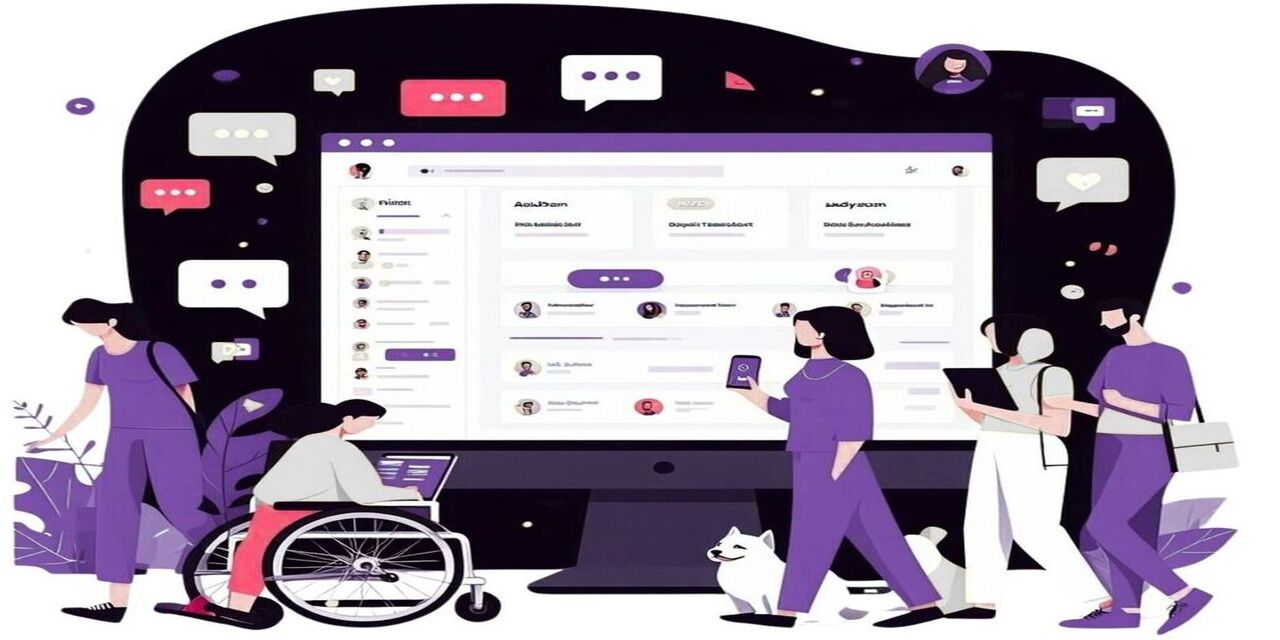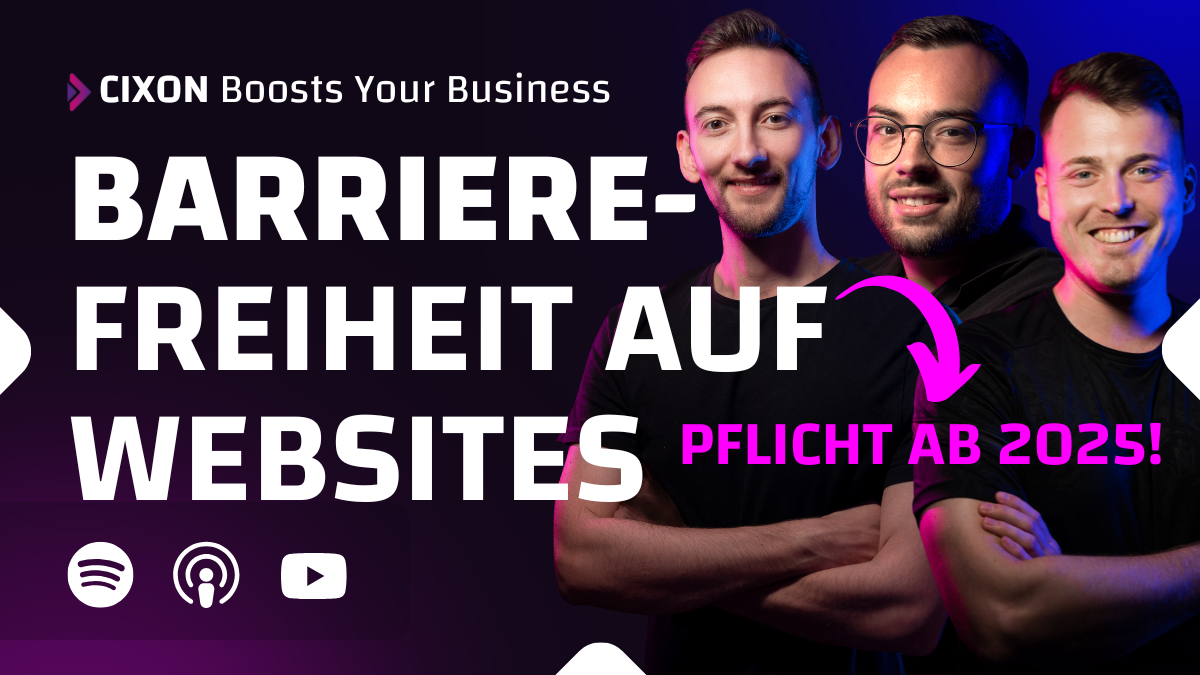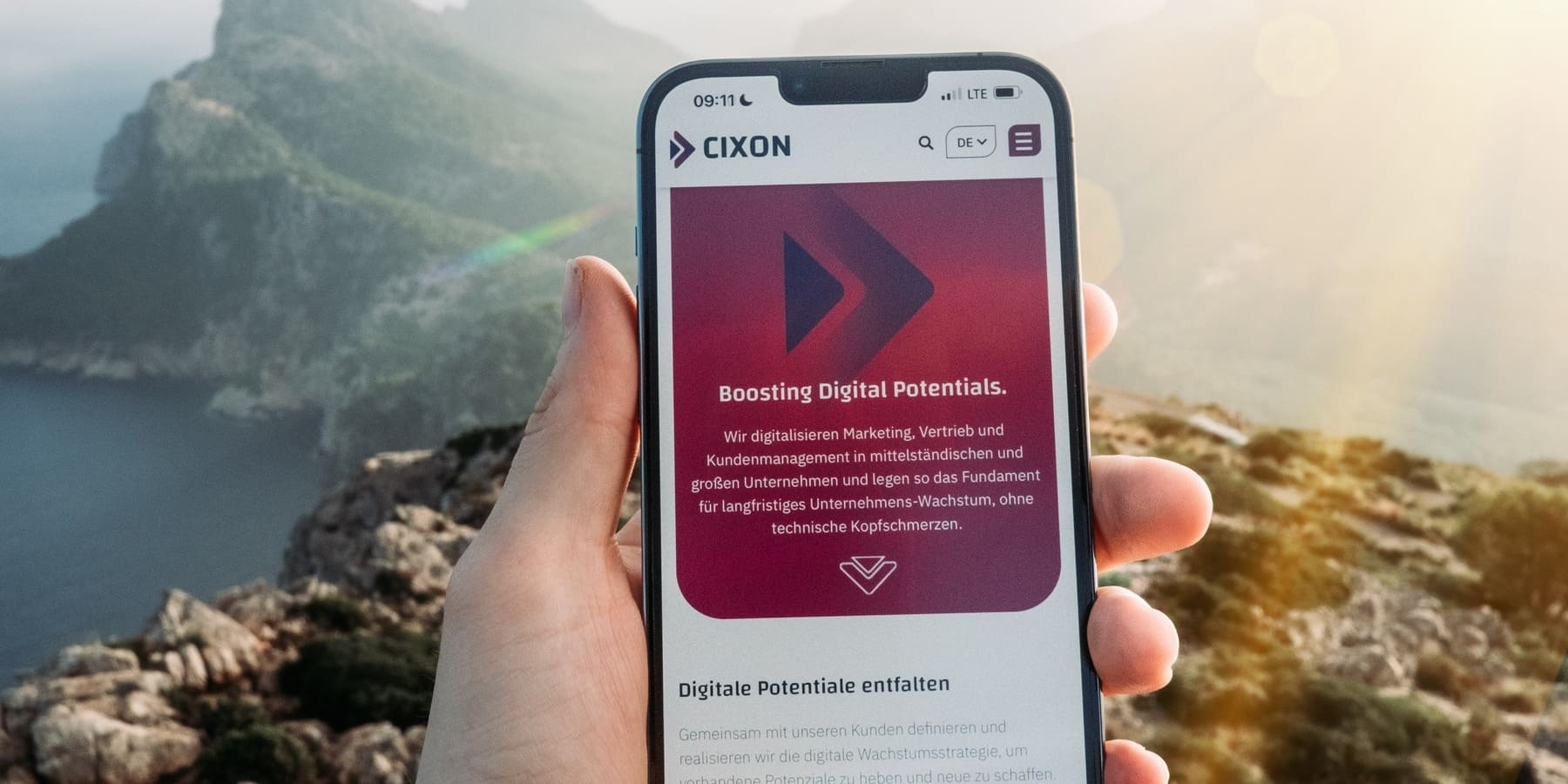The Accessibility Reinforcement Act (BFSG) will come into force on June 28, 2025 - but many companies are not yet prepared. Digital accessibility is no longer a voluntary measure, but a legal obligation for all B2C websites, apps and digital services. However, in addition to the legal requirement, accessibility offers numerous advantages: better user experience, greater reach and improved SEO rankings.
In this article, we show you what digital accessibility means and why it is so important.
What does digital accessibility mean?
Digital accessibility ensures that all people - regardless of their physical or cognitive limitations - can use the internet without barriers. An accessible website means:
- Perceivable content: Texts with good contrasts, alt texts for images, subtitles for videos.
- Usable navigation: pages can be navigated using the keyboard, time limits are avoided.
- Comprehensible structure: Clear language, intuitive menus, self-explanatory links and buttons.
- Robust technology: The website works with assistive technologies such as screen readers and various browsers.
Why are accessible websites important?
In Germany alone, 7.9 million people live with a severe disability. But digital barriers affect many more people: Older users, temporarily restricted people (e.g. with an injury) or people with low digital skills also benefit from an accessible website.
The rule of thumb is: accessibility is essential for 10% of people, necessary for 30% and beneficial for 100%.
The BFSG 2025: What companies need to know
The Barrierefreiheitsstärkungsgesetz (BFSG) will require digital products and services in the B2C sector to be accessible from June 28, 2025. This includes:
✔ Websites & web shops
✔ Mobile apps
✔ Self-service terminals
✔ Online banking & digital payment methods
Companies that are not barrier-free risk penalties and exclude a growing customer group. The implementation of the requirements should therefore not be postponed - because the sooner measures are taken, the smoother the adaptation process will run.
When is a website accessible?
A website is accessible if it can be used by people with visual, hearing, mobility or cognitive impairments without any hurdles. In practice, however, there are often major shortcomings:
- Poor contrast makes reading difficult for people with visual impairments.
- No subtitles in videos make content inaccessible for the deaf.
- Non-navigable forms prevent screen reader users from completing them.
- Complex language & nested menus make it difficult for people with cognitive impairments to use.
For a website to be considered accessible, the requirements of the Web Content Accessibility Guidelines (WCAG 2.2) should be met.
Advantages of accessible websites for companies
Web accessibility is not only a legal obligation, but also brings tangible benefits for companies. An accessible website improves the user experience for everyone, not just people with disabilities. Clear structures, easy-to-read texts and intuitive navigation also benefit older users or people with a low affinity for technology.
Accessibility also increases reach: Around 7.9 million people in Germany live with a severe disability - those who remove digital barriers gain a larger target group. Accessibility also pays off from an SEO perspective: Search engines prefer well-structured, easily accessible content, which has a positive effect on rankings.
Last but not least, an inclusive website strengthens the image and brand perception. Companies that take accessibility seriously demonstrate social responsibility and position themselves as modern and customer-oriented. Those who act early will secure a competitive advantage and avoid legal risks from the upcoming BFSG 2025.
How companies can make their website accessible
1. design optimization
- Good color contrasts & large font sizes for better readability.
- Intuitive navigation with clear structures & short paths.
- Ensure usability via keyboard & screen reader.
2. technical implementation
- Semantic HTML for better comprehensibility.
- Valid code & error-free markups for smooth compatibility.
- Automated accessibility checks for continuous monitoring.
3. accessible content
- Texts in simple language & clear structures.
- Alt texts for images, subtitles for videos & transcripts for audio content.
- Explanation of links & buttons for clear user guidance.
These measures not only make your website accessible, but also offer a better user experience for all visitors.
Conclusion: Ensure website accessibility now!
Time is of the essence: With the BFSG 2025, digital accessibility will become a legal requirement for many companies. Those who take action now will not only avoid penalties, but will also reach a broader target group, improve the user experience and strengthen their market position.
Digital accessibility is not an additional expense, but an investment in the future. It ensures greater reach, better SEO rankings and higher customer satisfaction - for all users, not just people with disabilities.
Companies that act early secure a competitive advantage and create a digital world that is accessible to all.
With CIXON as your partner, you will receive a customized solution that not only complies with legal requirements, but also future-proofs your website.
Book a free initial check now and implement the accessibility of your website professionally. We look forward to your inquiry.





